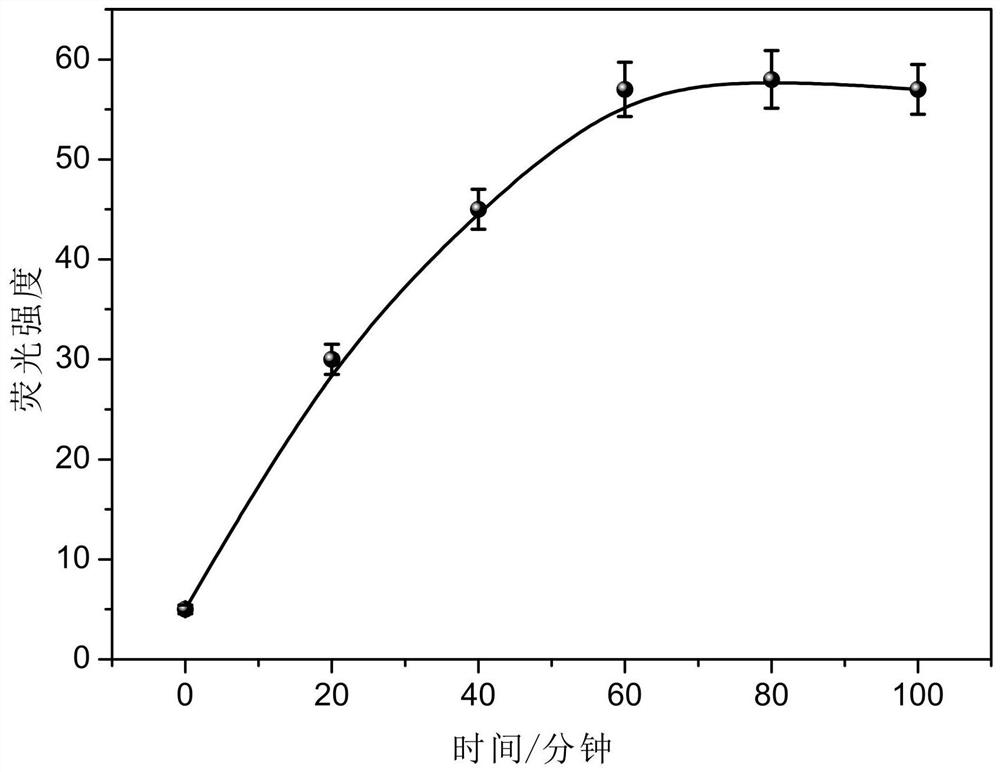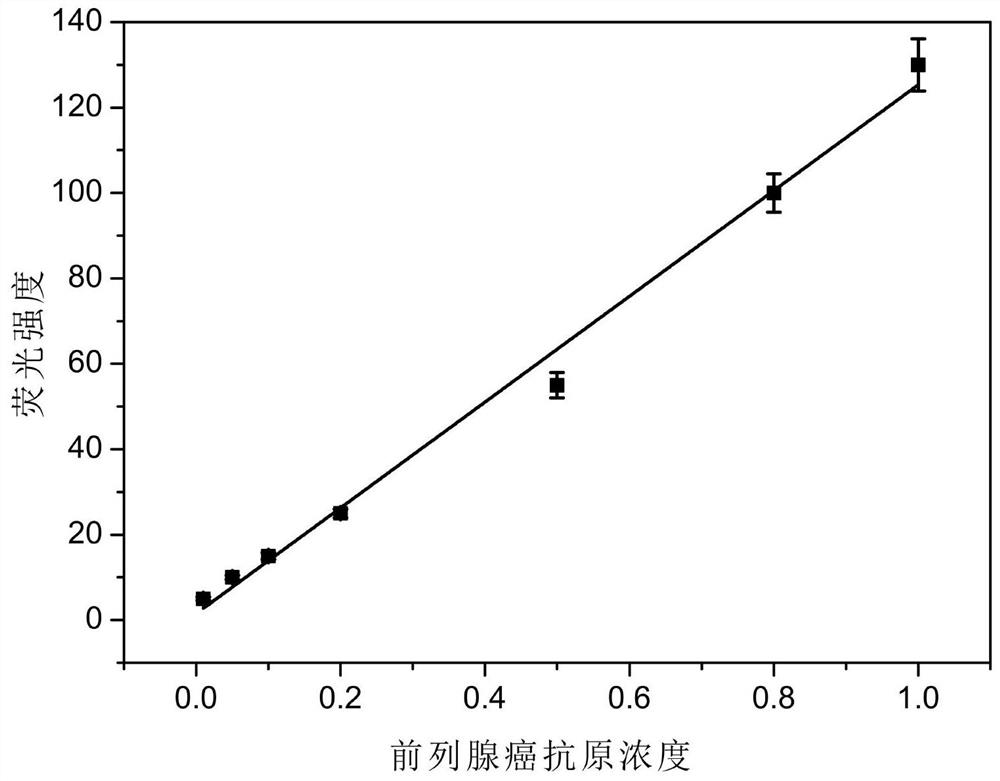A fluorescence resonance energy transfer biosensor and its application
A fluorescence resonance energy and biosensor technology, which is applied in the field of biosensors, can solve the problems of low analysis throughput, cumbersome operation steps, and high cost, and achieve high-sensitivity detection, simple preparation, and low-sensitivity solutions
- Summary
- Abstract
- Description
- Claims
- Application Information
AI Technical Summary
Problems solved by technology
Method used
Image
Examples
Embodiment Construction
[0027] In order to make the object, technical solution and advantages of the present invention clearer, the present invention will be further described in detail below in conjunction with the accompanying drawings and embodiments. It should be understood that the specific embodiments described here are only used to explain the present invention, not to limit the present invention.
[0028] 1. Preparation of the first binding probe solution
[0029] Aptamer 1 and block1 stock solutions were quantified using a UV fluorescence spectrophotometer to a concentration of 100 μM. Then take 2 μL stock solution and dissolve in 100 μL buffer solution (20mM HEPES, 500mM NaCl, pH 7.4), and anneal at 95°C to 4°C. 10 minutes.
[0030] 2. Preparation of the second binding probe solution
[0031] The stock solution of aptamer 2 was quantified with an ultraviolet fluorescence spectrophotometer to make the concentration 100 μM. Then take 2 μL stock solution and dissolve it in 100 μL buffer so...
PUM
 Login to View More
Login to View More Abstract
Description
Claims
Application Information
 Login to View More
Login to View More - R&D
- Intellectual Property
- Life Sciences
- Materials
- Tech Scout
- Unparalleled Data Quality
- Higher Quality Content
- 60% Fewer Hallucinations
Browse by: Latest US Patents, China's latest patents, Technical Efficacy Thesaurus, Application Domain, Technology Topic, Popular Technical Reports.
© 2025 PatSnap. All rights reserved.Legal|Privacy policy|Modern Slavery Act Transparency Statement|Sitemap|About US| Contact US: help@patsnap.com



